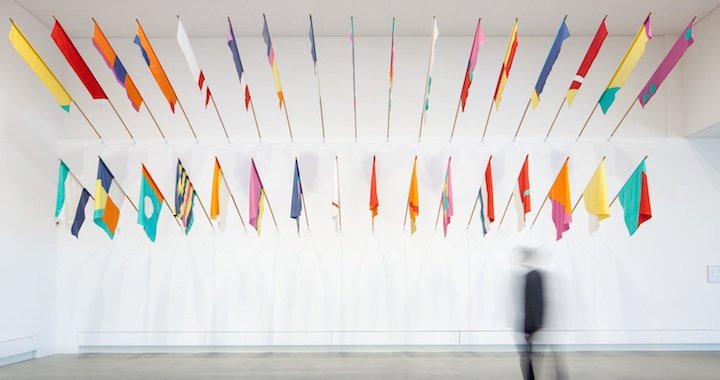
Sidekicked?
Alida Ivanov
09/04/2013
Poul Gernes /Sidekick/ Cosima von Bonin
Artipelag, Gustavsberg
March 8 – May 12, 2013
The story goes like this: Cosima von Bonin gets a catalogue of the obscure Danish artist, Poul Gernes. In 2001, her show at Kunstverein Hamburg was called Bruder Poul sticht in See (Brother Poul goes to sea), and it gave her worldwide recognition. Histories, tales, and anecdotes make up this imaginary love story between two artists who never even met.
Poul Gernes (1925-1996) moved uninhibitedly between painting, sculpture, design, performance, film and social activism. From 1968 on, he worked a lot with public art and made over 150 projects, most of which are in Denmark. Sidekick wants, in some ways, to capture Gernes’ belief that art should be seen as a positive, transformative power in society. He was never afraid to be provocative and questioning of the notion of art. This is apparent in the way he uses materials and how he incorporates both everyday actions and industrial production processes. Simultaneously, he respected traditional craft and cared strongly for the accessibility of art. In 2011, Lunds Konsthall showed a retrospective of his work, and it became obvious that Poul Gernes was not a big name in Sweden. The exhibition didn’t get that much press and it passed by almost unexplored. What’s funny, though, is that he lived in Sweden for almost 40 years and made many of his works here. Yet he remained unknown.
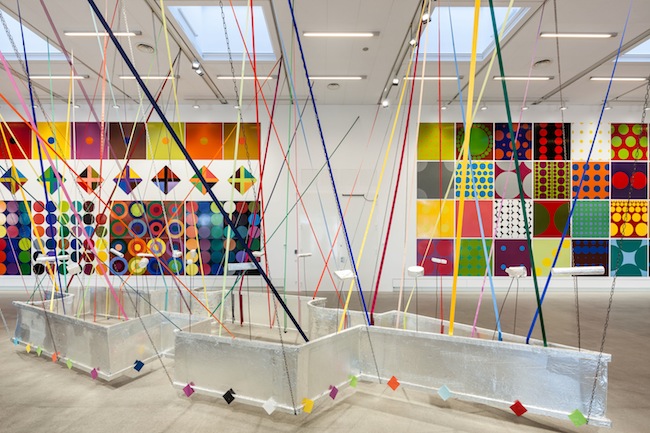
Poul Gernes. Untitled. 1968.
Photo: Jean-Baptiste Beranger
When entering Artipelag, you do get the feeling that Poul Gernes /Sidekick/ Cosima von Bonin was supposed to be a solo show. You are met with Gernes’ work already outside and in the hall: paintings and marble sculptures. The pièce de résistance is Lille Rosa, a naked marble woman looking dreamily out through the window. Her back is towards the entrance. You have to go around to see her in all her splendor (so to speak). The larger, 3-meter version is not present, unfortunately; Store Rosa (1982-1996) has an even greater splendor (and to find out what that is, you either have to see it for yourself, or use your Googling-skills). This is a taste of the cheeky sense of humor that Poul Gernes offers the visitor.
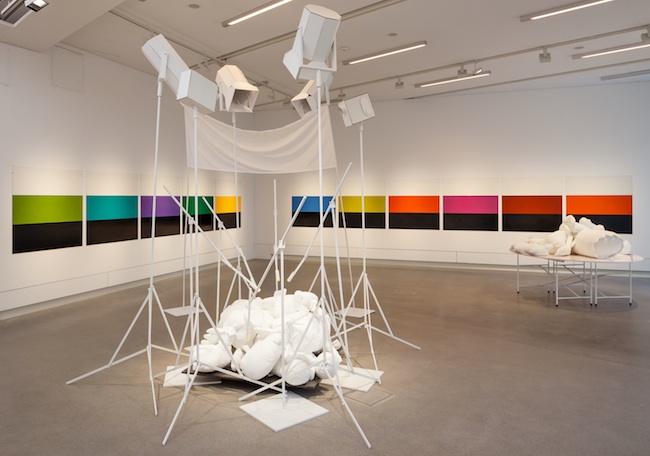
Cosima von Bonin. Wir sind viele. 2011.
Cosima von Bonin. The Table (Simpson, Eeyore, Duck &Duck version). 2011
Poul Gernes. Untitled. 1968.
Photo: Jean-Baptiste Beranger
Sidekick is built on two themes: a tale of “love” and a wish to shed light on an artist through the help of another: in this case, it is a way to get to know Poul Gernes. This show has set out to illustrate the width of his oeuvre. It takes a while before you even reach a piece by Cosima von Bonin.
Born in Mombasa, Kenya, in 1962, von Bonin is known for her multifaceted work that ranges from installations and painting, to sculpture and film. She is mostly known for her oversized stuffed animals, sewn paintings and minimalist sculptures, which also make up her contribution to Sidekick. The installations fluctuate between seriousness and humor, but always question the boundaries between art and everyday life, as well as the production of excess – which is something that she shares with Poul Gernes.
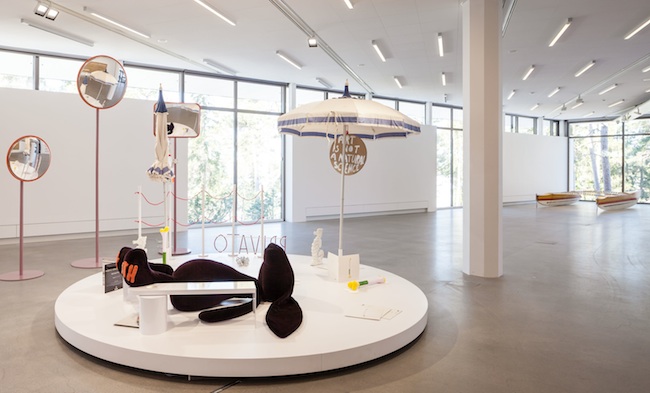
Cosima von Bonin. Amateur Dramatics. 2010
Photo: Jean-Baptiste Beranger
When Sidekick becomes a two-man-show, instead of just a solo show of Gernes, you immediately look for the love story, the chemistry between the two artists. Cosima von Bonin’s piece, Amateur Dramatics, interacts with itself, not with Gernes, nor with the other pieces. On a rotating plate we are served a stuffed rabbit with the words “sl oth” on its feet, parasols (one open, one closed), silver lobsters, white seahorses, vinyl-record cases, color-schemed bones and the slogan, “Art is not a natural science”. On one side, you see three mirrors and a gigantic cigarette. It’s like taking a break from work, but still feeling like you're being watched and being lazy because you’re not working. The outline of this part of the exhibition is quite simple – on one side you see von Bonin, and on the other, Gernes. Here, von Bonin is definitely the sidekick; her work is there to highlight Gernes'. This is also where the “love story” is a very fluent concept. It is a one-way love; von Bonin is inspired by Gernes, not the other way around. It’s not until you go further into the exhibition when the chemistry really comes out.
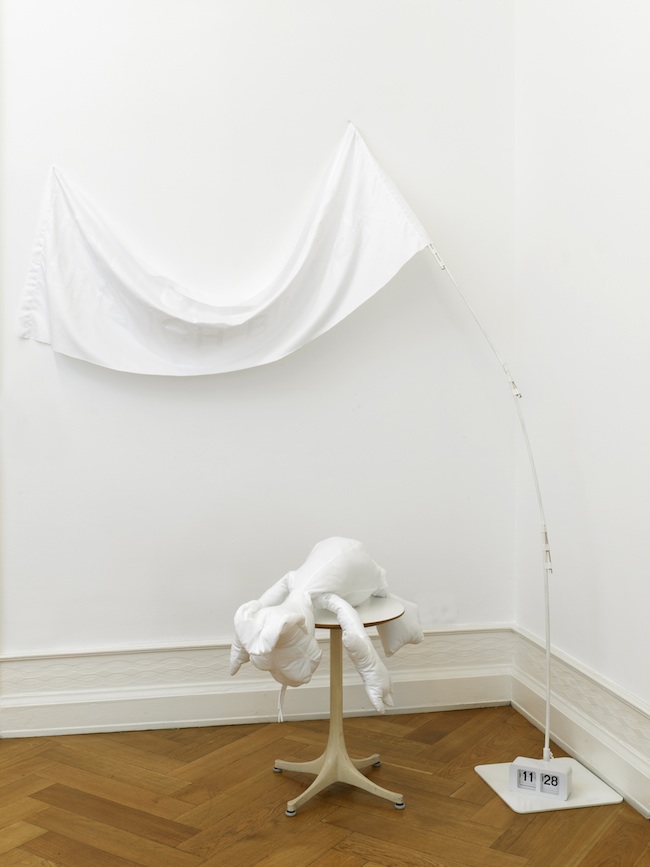
Cosima von Bonin. Ich lüge auch und Ich bin dein. 2011
Photo: Jean-Baptiste Beranger
The smaller spaces consist of different white sculptures and installations by Cosima von Bonin, which are themselves surrounded by Poul Gernes' color-bombed paintings. It’s like they are working with two sides of one coin: von Bonin strips shapes of their color to accentuate the form, while Gernes adds more and more color to do the same thing. The sidekick theme becomes more complex in these spaces. In some ways, Gernes becomes the sidekick here: her sculptures are placed in the middle of the rooms, while his paintings surround them, frame them.
In the last room, you can sit down and take a breather around a table and chairs that Poul Gernes color-schemed. This is a place where you can get to know the artist, either by reading or watching video-footage from different performances and happenings from the 60’s. He seemed to be a really fun person, and you get that feeling throughout the whole exhibition. I would’ve wanted to see a larger focus on Cosima von Bonin, but that wasn’t the point of the show.